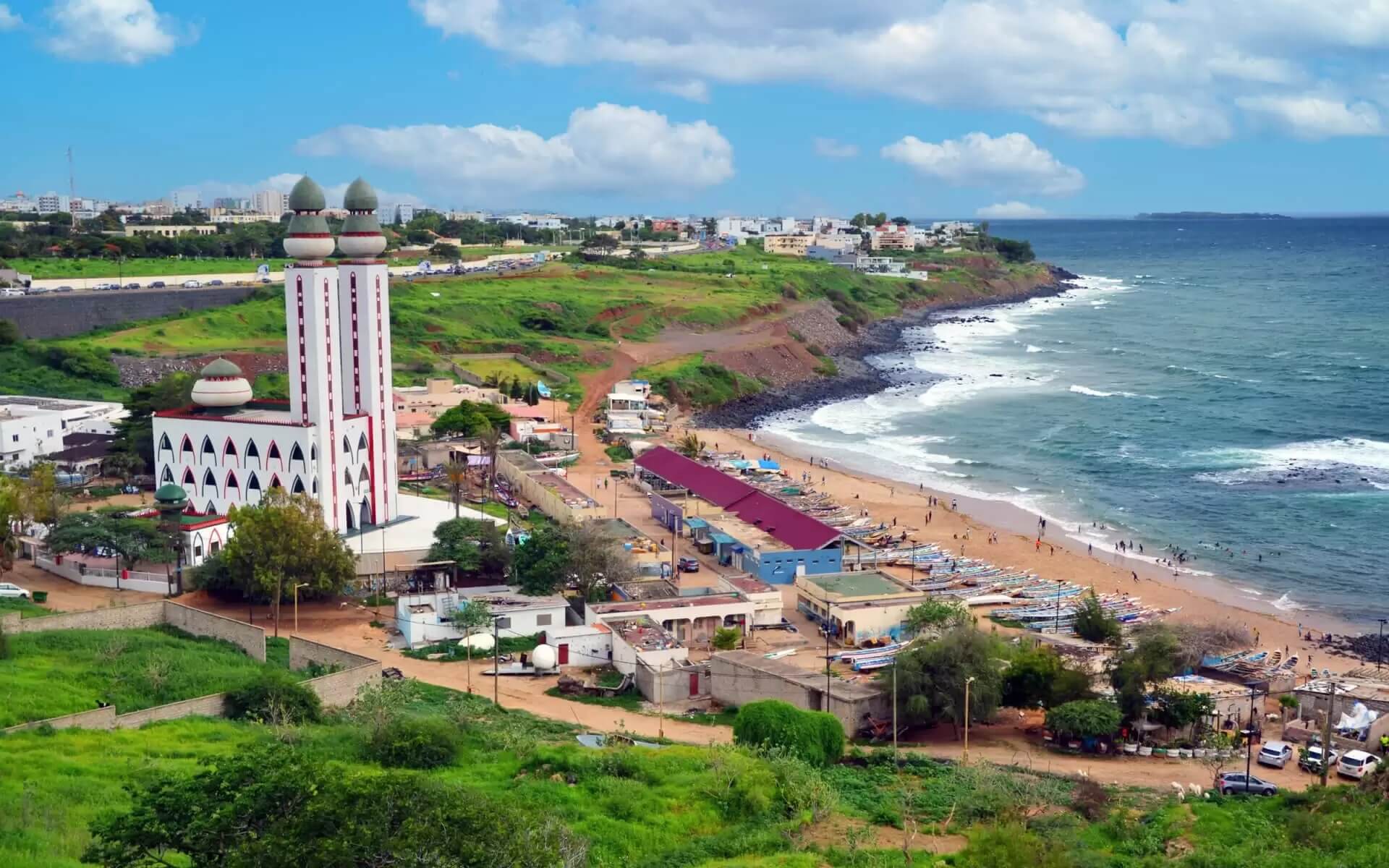The Republic of Senegal is a secular state. The country’s main religion is Islam. Approximately 94 percent of the country’s population follows Islam; the Christian community, which accounts for 5% of the population, is mainly Roman Catholic, although there are also a variety of Protestant groups. Animist ideas are held by 1% of the population, mostly in the southern portion of the nation. The Serer religion is practiced by certain Serer people.
In Senegal, the majority of Muslims are Sunni with Sufi influences. In Senegal, Islamic communities are centered on one of many Islamic Sufi orders or brotherhoods, each led by a khalif (xaliifa in Wolof, from Arabic khalfa), who is typically a direct descendant of the group’s founder. The Tijaniyya, whose biggest sub-groups are located in the towns of Tivaouane and Kaolack, and the Murdiyya (Murid), centered in the city of Touba, are the two largest and most famous Sufi organizations in Senegal. Nondenominational Muslims account for 27% of Muslims.
The Halpulaar (Pulaar-speakers), who are made up of Fula and Toucouleurs who live along the Sahel from Chad to Senegal, account for 23.8 percent of the population. They were the first to convert to Islam throughout history. Many Toucouleurs, or sedentary Halpulaar from the Senegal River Valley in the north, converted to Islam about a millennium ago and helped spread Islam across Senegal. The Wolofs were successful, but the Serers were defeated.
The majority of villages south of the Senegal River Valley, on the other hand, were not fully Islamized. The Serer people stood out as one of these groups, having fought Islamization for almost a thousand years (see Serer history). Although many Serers are Christians or Muslims, their conversion to Islam is very recent, since they converted of their own free choice rather than through compulsion, despite centuries of failed attempts at coercion (see the Battle of Fandane-Thiouthioune).
The Tidjâniyya’s efforts aided the development of official Quranic schools (known as daara in Wolof) during the colonial era. The word daara is frequently used to labor groups dedicated to working for a religious leader in Murid communities, which put a greater emphasis on work ethic than on literary Quranic study. The much earlier Qdiriyya order and the Senegalese Laayeen order, which is popular among the coastal Lebu, are two other Islamic organizations. Most Senegalese youngsters now spend many years studying in daaras, memorizing as much of the Qur’an as they can. Some of them continue their religious education in majlis (councils) or the increasing number of private Arabic schools and officially sponsored Franco-Arabic institutions. The Ahmadiyya Muslim Community, a contemporary messianic group in Islam, is also present in the nation, accounting for around 1% of the Muslim population.
Small Roman Catholic communities may be found mostly among the coastal Serer, Jola, Mankanya, and Balant people, as well as among the Bassari and Coniagui in eastern Senegal. Immigrants mostly attend Protestant churches, although in the second part of the twentieth century, Protestant churches headed by Senegalese pastors of other ethnic groups emerged. Catholic and Protestant rituals are performed in Dakar by Lebanese, Cape Verdean, European, and American immigrants, as well as some Africans from other countries and Senegalese themselves. Despite the fact that Islam is the predominant religion in Senegal, Léopold Sédar Senghor, the country’s first president, was a Catholic Serer.
Serer religion includes belief in a supreme god known as Roog (Koox among the Cangin), Serer cosmogony, cosmology, and divination rituals such as the Serer Saltigues’ yearly Xoy (or Khoye) ceremony (high priests and priestesses). Muslim holidays in Senegal and Gambia, such as Tobaski, Gamo, Koriteh, Weri Kor, and others, are all derived from the Serer faith. They were ancient Serer celebrations that had their roots in Serer religion rather than Islam.
The Boukout is a religious ceremony performed by the Jola.
Judaism and Buddhism have a limited number of followers. Several ethnic groups practice Judaism, whereas a significant number of Vietnamese practice Buddhism. The Bahá’ Faith in Senegal was founded when ‘Abdu’l-Bahá, the religion’s founder’s son, identified Africa as a location where Bahá’s should go more widely. In 1953, the first Bahá’s came in the French West African region that would become Senegal. Senegal’s first Bahá’ Local Spiritual Assembly was elected in Dakar in 1966. The first National Spiritual Assembly of Senegal was elected by the Bahá’ community in 1975. The most current estimate, published in a 2005 study by the Association of Religion Data Archives, puts the number of Bahá’s in Senegal at 22,000.


